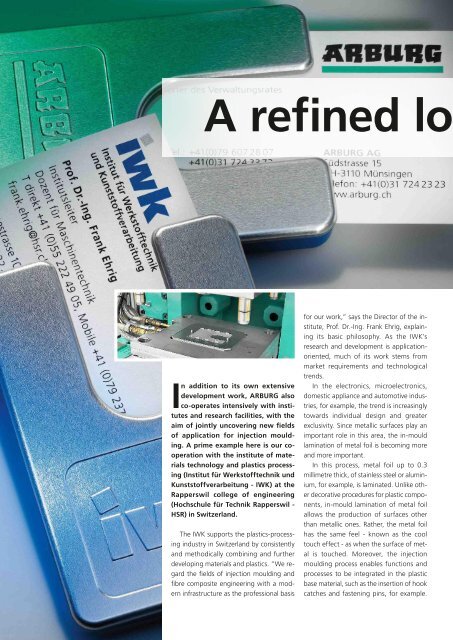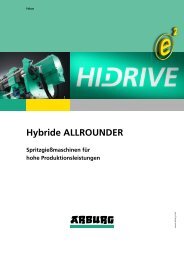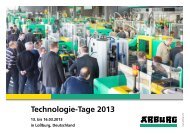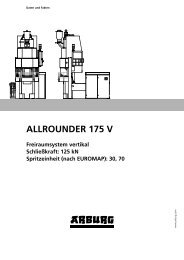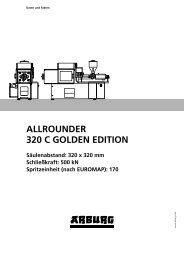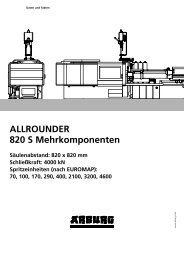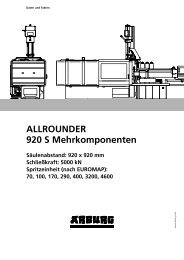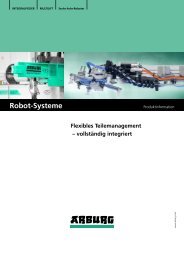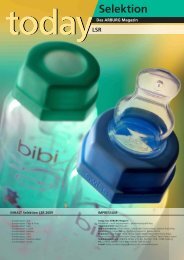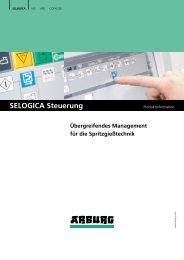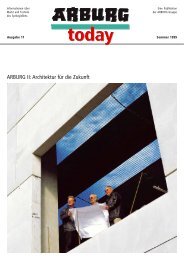The ARBURG Magazine - British Plastics & Rubber
The ARBURG Magazine - British Plastics & Rubber
The ARBURG Magazine - British Plastics & Rubber
You also want an ePaper? Increase the reach of your titles
YUMPU automatically turns print PDFs into web optimized ePapers that Google loves.
A refined loo<br />
In addition to its own extensive<br />
development work, <strong>ARBURG</strong> also<br />
co-operates intensively with institutes<br />
and research facilities, with the<br />
aim of jointly uncovering new fields<br />
of application for injection moulding.<br />
A prime example here is our cooperation<br />
with the institute of materials<br />
technology and plastics processing<br />
(Institut für Werkstofftechnik und<br />
Kunststoffverarbeitung - IWK) at the<br />
Rapperswil college of engineering<br />
(Hochschule für Technik Rapperswil -<br />
HSR) in Switzerland.<br />
<strong>The</strong> IWK supports the plastics-processing<br />
industry in Switzerland by consistently<br />
and methodically combining and further<br />
developing materials and plastics. “We regard<br />
the fields of injection moulding and<br />
fibre composite engineering with a modern<br />
infrastructure as the professional basis<br />
for our work,” says the Director of the institute,<br />
Prof. Dr.-Ing. Frank Ehrig, explaining<br />
its basic philosophy. As the IWK’s<br />
research and development is applicationoriented,<br />
much of its work stems from<br />
market requirements and technological<br />
trends.<br />
In the electronics, microelectronics,<br />
domestic appliance and automotive industries,<br />
for example, the trend is increasingly<br />
towards individual design and greater<br />
exclusivity. Since metallic surfaces play an<br />
important role in this area, the in-mould<br />
lamination of metal foil is becoming more<br />
and more important.<br />
In this process, metal foil up to 0.3<br />
millimetre thick, of stainless steel or aluminium,<br />
for example, is laminated. Unlike other<br />
decorative procedures for plastic components,<br />
in-mould lamination of metal foil<br />
allows the production of surfaces other<br />
than metallic ones. Rather, the metal foil<br />
has the same feel - known as the cool<br />
touch effect - as when the surface of metal<br />
is touched. Moreover, the injection<br />
moulding process enables functions and<br />
processes to be integrated in the plastic<br />
base material, such as the insertion of hook<br />
catches and fastening pins, for example.


